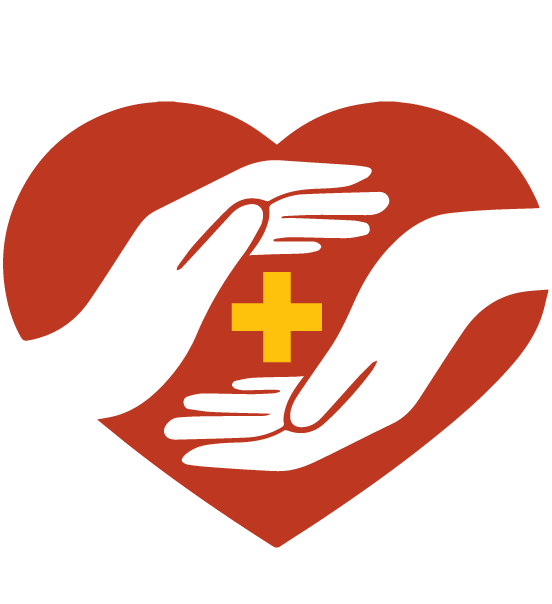In Norway, around 2,500 - 3,000 people are affected by sudden, unexpected cardiac arrest outside hospitals each year. Many of these will be at home, with family or in other populated areas.1 In cities and densely populated areas, there will be people with first aid skills and defibrillators nearby. It is as simple as entering the defibrillator register to find the nearest defibrillator. But what about the cardiac arrests that occur outside of these safe surroundings?
Norwegians love to go to the mountains
During Easter, many Norwegians go to the mountains. Some have cabins in cabin-zones where Red Cross personnel keep watch. Others stay in more secluded areas. One of our favorite activities is going on hikes. People on skis, snowmobiles or just in hiking boots can be seen everywhere in the mountains. When you meet someone else who is on a trip, it is natural for us to say hello. Many even take the time for a small chat. "How are you?" "Where are you going?" This is not only important for building rapport, but also for your own safety. If you get lost on the mountain, the people you meet can provide important information to the emergency services.
Nobody out on a trip thinks that they will have a cardiac arrest or that an accident will occur. If you are over 50, the chance of cardiac arrest is much greater. Over half of the registered cardiac arrests were between 56 and 80 in 2015. Nevertheless, there are many younger people who also experience this. Sometimes there are medical reasons, other times there may be no explanation. That is why it is so important to be ready for every situation.
1 in 3 does not call 113 or are confident about their CPR skills
A survey by NordStat through the Gjensidigestiftelsen and "Samen redder vi liv" shows that one in three would not call 113 as soon as a cardiac arrest occurs. The same number are uncertain about cardiopulmonary resuscitation.2 This means that many will not act quickly enough to save a person who has suffered a cardiac arrest. It only takes a few minutes from the time the heart has stopped, where the oxygen supply is cut off, to damage can occur in the brain. Why then are we so bad at providing life-saving first aid? One of the reasons is because most people are not sufficiently informed about the topic. Many people think that it is enough to wait for the ambulance to arrive or for someone else to take the initiative. But when it comes to cardiac arrest, the first minutes are vital.
So how can one best prepare? Everyone should know basic CPR. If you are unsure, it is smart to take a course. Many companies hold CPR courses for their employees. Ask about the possibilities. Otherwise, it is possible to sign up for courses for private individuals or take online courses. A practical course with a doll and a defibrillator is preferred, but online may be sufficient. Don't be afraid to call 113. It can help to download the Hjelp 113 app on your mobile. Today, most people have smartphones and the Hjelp 113 app is specially designed for emergency situations. It has an overview of all emergency numbers, shows your coordinates and where the nearest defibrillator is located.
No coverage or the emergency services are taking too long?
In the mountains there are usually not many others around you and it may be that you do not have coverage on your mobile phone. In such a situation it is important to keep a cool head. First of all, you should get an overview of the situation, call 113 if possible and make sure that the person does not get cold. If cardiac arrest is involved, begin CPR immediately. Give 30 chest compressions and 2 breaths. If you are unable to give breaths or this prevents you from being comfortable giving CPR, perform chest compressions only.3 This is better than no life saving effort. If you have access to a defibrillator, use it and follow the instructions.
Although CPR is an effective method, it will only supplement the body with oxygen equivalent to 25-30% of normal capacity.4 Only 5-7% of those who have a cardiac arrest outside hospital survive. A defibrillator can increase the probability by as much as 80%. Oslo, which has the largest proportion of defibrillators, has a survival rate of 14%.5
Take your defibrillator with you
The great thing about defibrillators today is that they are as big as a backpack. They run on batteries and have everything you need in a pocket that can be closed. If there are any problems with it, the machine will usually report this. You can easily take it with you in the car when you have to drive long distances or take it with you to the cabin. Due to the simple instructions, they can be used by anyone, even children.
It is easy to think that nothing will happen and that you do not need to take it to the cabin. But remember that cardiac arrest can happen anywhere, not just where you are most often.
Be safe, bring your defibrillator.
Sources:
1 Andersson, et.al. 2016. Norsk hjertestansregister Årsrapport for 2015 med plan for forbedringstiltak. Report. Sourced from: https://www.kvalitetsregistre.no/sites/default/files/8_arsrapport_2015_hjertestans.pdf
2 Gjensidigestiftelsen, 2019. Norsk ekspert bekymret på Verdens hjerte- og lungeredningsdag: 1 av 3 bryter hovedregelen som kan redde liv. Sourced from: https://kommunikasjon.ntb.no/pressemelding/norsk-ekspert-bekymret-pa-verdens-hjerte--og-lungeredningsdag-1-av-3-bryter-hovedregelen-som-kan-redde-liv?publisherId=16416575&releaseId=17872786
3 Oftedahl, Live. 2016. Hjerte-lungeredning uten munn-til-munn? Luftambulanseforum. Sourced from: https://ambulanseforum.no/artikler/hjerte-lungeredning-uten-munn-til-munn
4 Store Norske Leksikon. Hjerte-lunge-redning (HLR). Sourced from: https://sml.snl.no/hjerte-lunge-redning_-_HLR#:~:text=Dette%20har%20som%20form%C3%A5l%20%C3
5 Hofgaard, Philip. 2011. 15 personer rammes hver dag. NRK. Sourced from: https://www.nrk.no/vestfoldogtelemark/15-far-hjertestans-hver-dag-1.7815569


